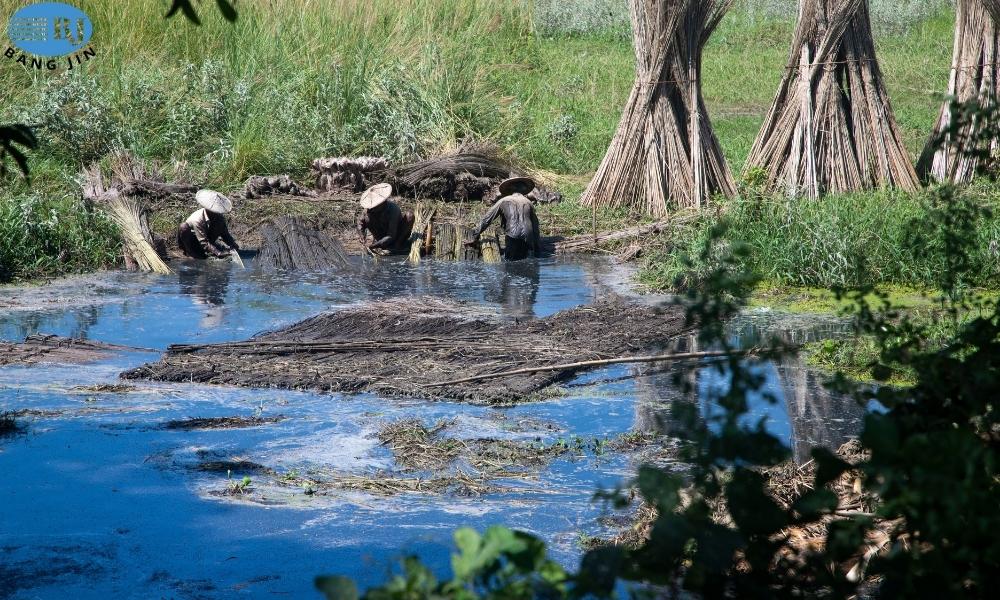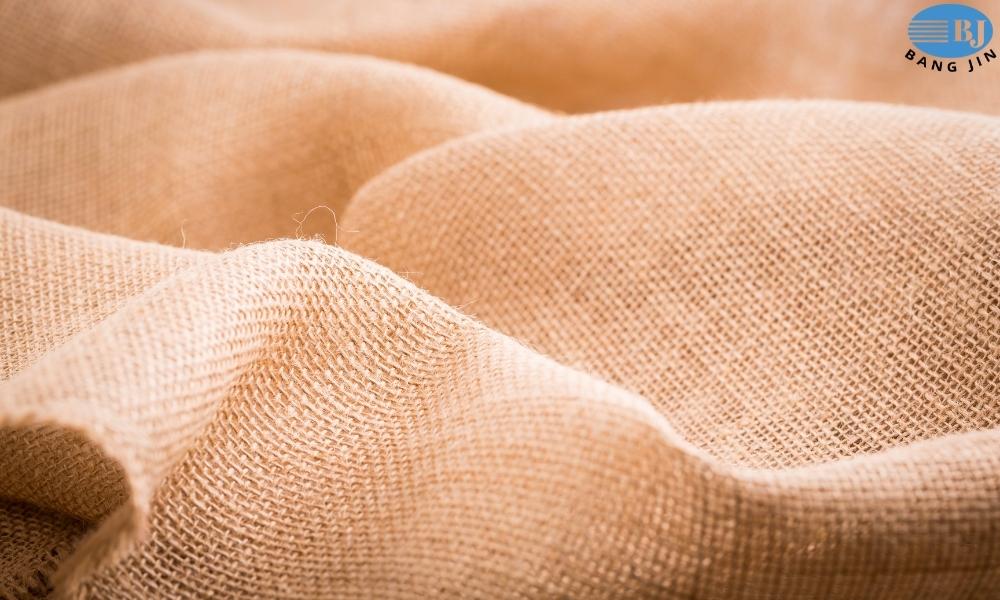Although you might not know it, cotton and jute are the two most popular materials in use today. Do you genuinely know where jute cloth is produced in light of this? It turns out that jute cloth is a typical material that is primarily utilized for household products and home furnishings. Jute is a natural material that has a lot of texture. If you’ve ever used a jute rope, piece of furniture, or rug, you probably already know what to anticipate. This article will help you understand the benefits of jute fabrics!
Where does Jute Fabric Originate?
The white jute plant’s bark is used to make jute. It is a natural fiber known as the “Golden Fibre” because of its golden and silky sheen. An annual crop, jute grows in roughly 120 days (April/May to July/August).
It flourishes in tropical lowland regions with humidity ranging from 60% to 90%. Jute is a rain-fed crop that requires nothing in the way of insecticides or fertilizer. Jute is one of the most reasonably priced natural fibers and is second only to cotton in terms of production volume and range of applications.
How is Jute Fabric Extracted?

Cellulose, the main component of plant fiber, and lignin are the main components of jute fibers (major components of wood fiber). Either biological or chemical retting methods can be used to remove the fibers. Given the cost of utilizing chemicals to remove the stem’s fiber, biological techniques are more frequently used. Jute stems can be bundled in various ways and then soaked in water to help separate the fibers from the stem before stripping in order to perform biological retting. These methods include stack, steep, and ribbon. Following retting, stripping starts. Non-fibrous material is removed during the stripping process so that the fibers can be extracted from the stem.
Different Purposes of Jute Fabrics
Jute is a versatile fibre. Jute yarn largely supplanted flax and hemp fibers in sackcloth during the Industrial Revolution. The majority of modern manufactured jute items are still sacking. The versatility of jute, which may be used alone or in a variety of blends with other fibers and materials, is one of its main advantages. Despite the fact that synthetic materials are replacing jute in many of these applications, some still employ jute because it degrades naturally in situations where synthetics would be inappropriate. Containers for growing young plants, soil- and erosion-controlling geotextiles, as examples of such uses, are meant to degrade over time and don’t require removal.
- Textile: The most common jute fiber-based produced goods are yarn and twine, sacking, hessian, carpet backing fabric, and various textile blends. It promotes enhanced fabric breathability and has high tensile strength and minimal extensibility. The fibers are frequently combined with other fibers, both synthetic and natural, and are woven into area rugs, carpets, chair covers, and curtains. Imitation silk can be created by separating the finest threads. Jute and wool can be combined. Jute’s crimp, softness, pliability, and look can all be enhanced by treating it with caustic soda, which makes it easier to spin with wool. B J Geotextile is creating a revolution in jute products in Bangladesh.
- Packaging: Jute is widely used as sacking for agricultural products, and it is also being utilized more and more in stiff packaging, reinforced plastic, and pulp and paper production to replace wood.
- By-Products: Jute has a wide range of by-products, some of which are used in paints, cosmetics, and other goods. In the rural parts of the countries that produce jute, jute sticks are utilized as fences and fuel. For the production of particle boards, pulp, and paper, these are suitable replacements for forest wood and bamboo.
Benefits of Jute Fabrics
Jute fiber is entirely recyclable and biodegradable, making it eco-friendly. About 15 tonnes of carbon dioxide are consumed and 11 tonnes of oxygen are released per hectare of jute plants. Jute cultivation in crop rotations improves the soil’s fertility for the following crop. When burned, jute does not release any harmful fumes.
- The best choice to stop harmful wastes is jute fabric. Jute bags are replacing plastic bags to reduce environmental pollution. Due to their dangerous components, plastic bags have been effectively prohibited in India and many other nations.
- Jute can be grown on smaller plots of land. Jute fiber may be produced on a single hectare of land far more efficiently than cotton. More food crops can be grown as a result of the reduced land, which also lowers the risk of food inflation. Compared to cotton crops, jute crops require less fertilizer, herbicide, and pesticide. Jute crops require fewer acres to generate the same quantity of vegetable fiber as cotton does.
- The yield of other crops increases and the danger of disease decreases when jute is rotated with other crops in the same area. Many nutrients are replaced in the soil during jute crops, making the field producer for the following crop. Jute is often grown in rotation with other crops to improve soil fertility. For the world to preserve its ecological equilibrium, trees are crucial. These trees will be preserved and the ecological balance of the globe will be improved by using jute goods. Protection of trees could help with issues like soil erosion, flooding, uneven rainfall, soil fertility, climate change, dwindling wildlife habitats, etc.
Conclusion
Next to cotton, jute is a significant natural fiber crop in the world. Since their functions are so similar, jute and Mesta crop are together referred to as raw jute in trade and industry. Jute fiber in its raw form is significant to the national economy. Jute in its raw form was initially thought of as a raw material source exclusive to the packaging industry. Jute has high antistatic and insulating qualities in addition to having a low thermal conductivity and moderate moisture retention. The most common jute fiber-based produced goods are yarn and twine, sacking, hessian, carpet backing fabric, and various textile blends. The multipurpose usefulness and eco-friendly applications make jute fabric attractive to many!


